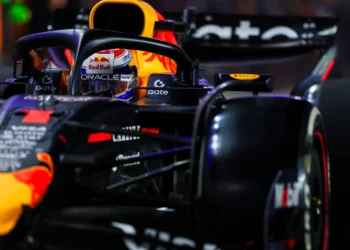The Shocking Truth Behind F1 Hosting Fees Unveiled!
Formula 1 races are not just about speed and adrenaline; they are also about exorbitant hosting fees that can reach tens of millions of dollars per event. These jaw-dropping costs are what circuits pay for the privilege of hosting a Grand Prix weekend, making them a crucial component of F1’s annual revenue stream. Today, we delve deep into the intricate world of F1 circuit fees, exploring the reasons behind the staggering figures that shape the economics of hosting a Formula 1 race.
When a circuit or city secures the rights to host a Formula 1 Grand Prix, they enter into a contract with the sport’s organizers, currently led by Liberty Media. This contract includes an annual hosting fee, essentially a payment made to Formula 1 for the honor of staging the event. These fees are often locked in for multiple years, with built-in yearly increases that can escalate expenses significantly. Despite the astronomical costs, many venues and countries eagerly embrace the financial burden, driven by motivations beyond mere race day excitement.
In exchange for these hefty sums, local promoters gain the right to host the race, utilize F1’s branding, and attract global media attention. However, it’s important to note that Formula 1 typically retains revenue from sources like global broadcasting rights and trackside sponsorships, leaving local organizers to rely mainly on income from ticket sales, concessions, and local sponsorships. This lopsided financial structure turns hosting a Grand Prix into a high-stakes gamble, where expenses soar due to the F1 fee and operational costs, while revenue streams remain limited.
Despite the challenges posed by these staggering hosting fees, they have become a cornerstone of F1’s financial model. On average, hosting a Grand Prix costs around $30 million per year, with the total annual fees paid to F1 across a full calendar of races reaching a staggering $700 million or more. This money plays a pivotal role in funding the sport, including the distribution of prize money among teams like Mercedes, Ferrari, Red Bull, McLaren, and others.
The amounts that circuits pay to host F1 races vary widely, ranging from approximately $20 million at the lower end to nearly $60 million at the higher end per year. Numerous factors influence these fees, including the location of the race, its historical significance, and the level of interest from F1 and the host. For instance, the iconic Monaco Grand Prix traditionally pays a relatively low fee, reflecting its prestige and historical status, while newer races in the Middle East like Qatar and Saudi Arabia shell out top-tier fees exceeding $50 million annually.
As hosting an F1 race evolves into a more expensive endeavor, new trends have emerged in the world of F1 hosting fees. Countries eager to showcase their global presence and attract tourism are entering bidding wars to secure races, driving fees to unprecedented heights. Simultaneously, long-term contracts with rising fees over time have become the norm, providing stability for both F1’s income and the hosts, albeit at a substantial cost.
In conclusion, the decision to host an F1 race transcends mere financial considerations, with tourism influx, economic stimulation, global exposure, and national pride playing crucial roles in the equation. While the direct profitability of hosting a Grand Prix might be slim or even negative, the indirect benefits derived from hosting such a prestigious event often make the investment worthwhile on a broader scale. As Formula 1 continues to expand its reach across the globe, the allure of hosting a Grand Prix remains a compelling proposition for circuits, cities, and nations worldwide.










